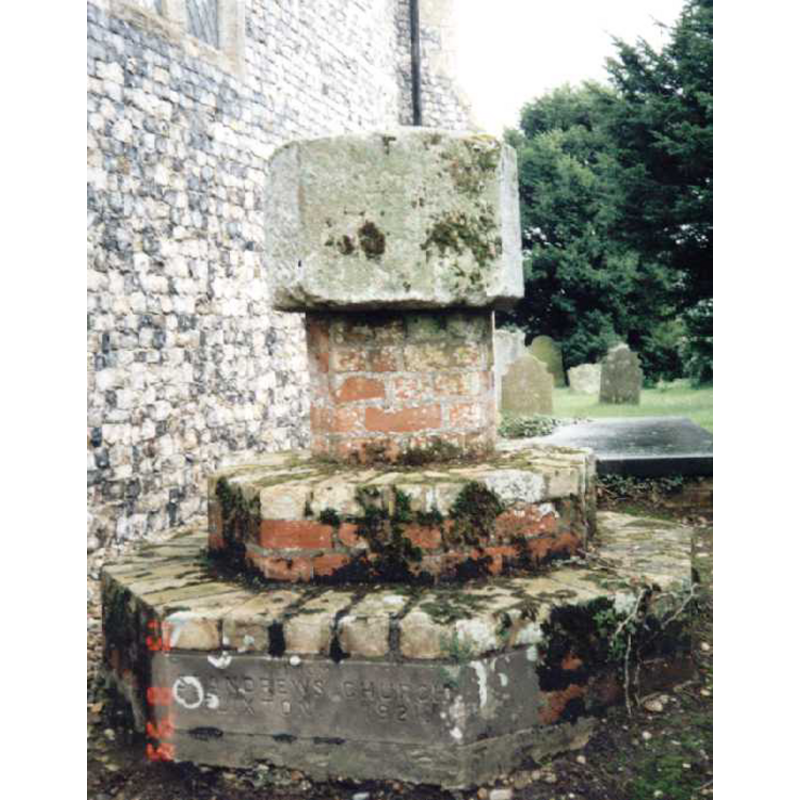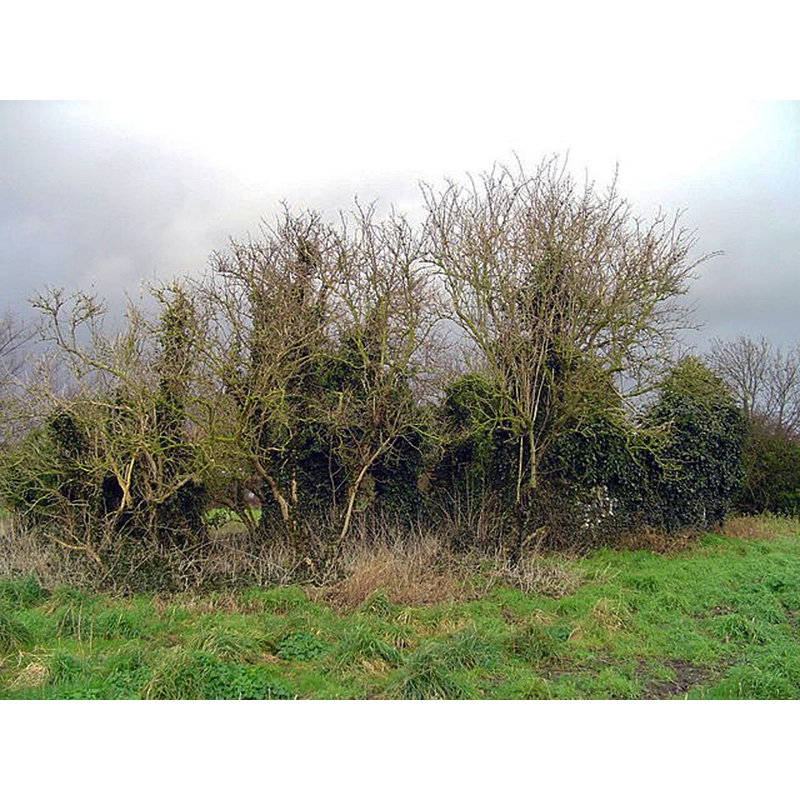Flixton nr. Blundeston / Flixtuna

Image copyright © Simon Knott, 2007
Standing permission
Results: 2 records
view of church exterior in context
Scene Description: Source caption: "Ruins of Flixton St Andrew's church. In 1703 the roof of the church was blown off during a hurricane and it was never repaired. It was abandoned and left to the elements. Most of what remains is rubble and a few walls of the west end."
Copyright Statement: Image copyright © Adrian S Pye, 2007
Image Source: digital photograph taken 13 February 2007 by Adrian S Pye [www.geograph.org.uk/photo/1865583] [accessed 7 March 2019]
Copyright Instructions: CC-BY-SA-3.0
INFORMATION
FontID: 02493FLI
Object Type: Baptismal Font1
Church/Chapel: Parish Church of St. Andrew [in ruins]
Church Patron Saints: St. Andrew
Country Name: England
Location: Suffolk, East Anglia
Directions to Site: The ruins of the old church are located approximately 1 km from the B1074, near Blundeston [Not to be confused with another Flixton, near Bungay; this hamlet lies S of Blundeston]
Ecclesiastic Region: Diocese of Norwich
Historical Region: Hundred of Wangford
Font Location in Church: Now located in the churchyard at the Blundeston church
Century and Period: Medieval
Credit and Acknowledgements: We are grateful to Simon Knott, of www.suffolkchurches.co.uk, for the information on and photograph of this font.
Church Notes: Only ruins remain of the old church, about half a mile from the B1074 (S. Knott)
Font Notes:
Click to view
There are three entries for this Flixton [variant spelling] in the Domesday survey [https://opendomesday.org/place/TM5195/flixton/] [accessed 7 March 2019]; the 1066 lord in one of the entries is the Church of St Michael, Flixton. Suckling (1846-1848) writes: "The Church at Flixton, dedicated to St. Andrew, and frequently called the chapel, is now a ruin [...] The ancient font has been recovered by Charles Steward, Esq., of Blundeston, and placed in a part of his pleasure-grounds, situated in the parish of Flixton. It is much regretted that the following legend, commemorative of its history, from the classical pen of the Rev. James Ford, of Navestock, has not yet been inscribed upon it. 'Hunc Fontem Lustrale / Ecclesiæ de Flixton, / Olim Consecratum, / Et De Sordium Congerie, / In Agro vicino Ereptum, / Hic Poni Curavit / Carolus Steward, De Sydnors, Armiger.' Knott [www.suffolkchurches.co.uk/flixtona.htm] reports ca. 2005 that the plain hexagonal pedestal font was moved from the church ruins to the churchyard at the Blundeston church, and "can be found outside the priest's door". The font was moved to the outside of Blundeston St. Mary's ca. 1912, apparently. [NB: Suckling (1846-1848) notes -after Tanner?- that the original church of this Flixton may have been the mother church of the district, but it is no tmentioned in Domesday
COORDINATES
Church Latitude & Longitude Decimal: 52.515039, 1.702935
Church Latitude & Longitude DMS: 52° 30′ 54.14″ N, 1° 42′ 10.57″ E
UTM: 31U 411983 5819115
MEDIUM AND MEASUREMENTS
Material: stone, type unknown
Font Shape: hexagonal (mounted)
Basin Interior Shape: round
Basin Exterior Shape: hexagonal
REFERENCES
Knott, Simon, The Suffolk Churches Site, Simon Knott, 1999-. [standing permission to reproduce images received from Simon [February 2005]. URL: www.suffolkchurches.co.uk.
Suckling, Alfred, The History and Antiquities of the County of Suffolk, with genealogical and architectural notices of its several towns and villages, London: John Weale [...], 1846-1848
